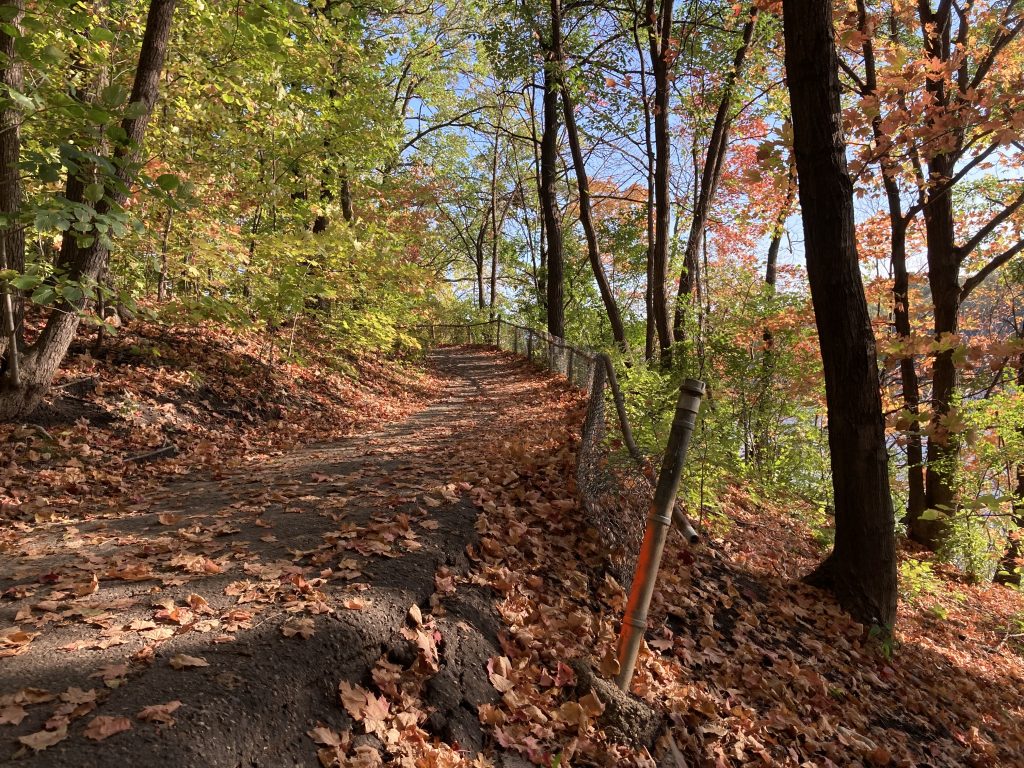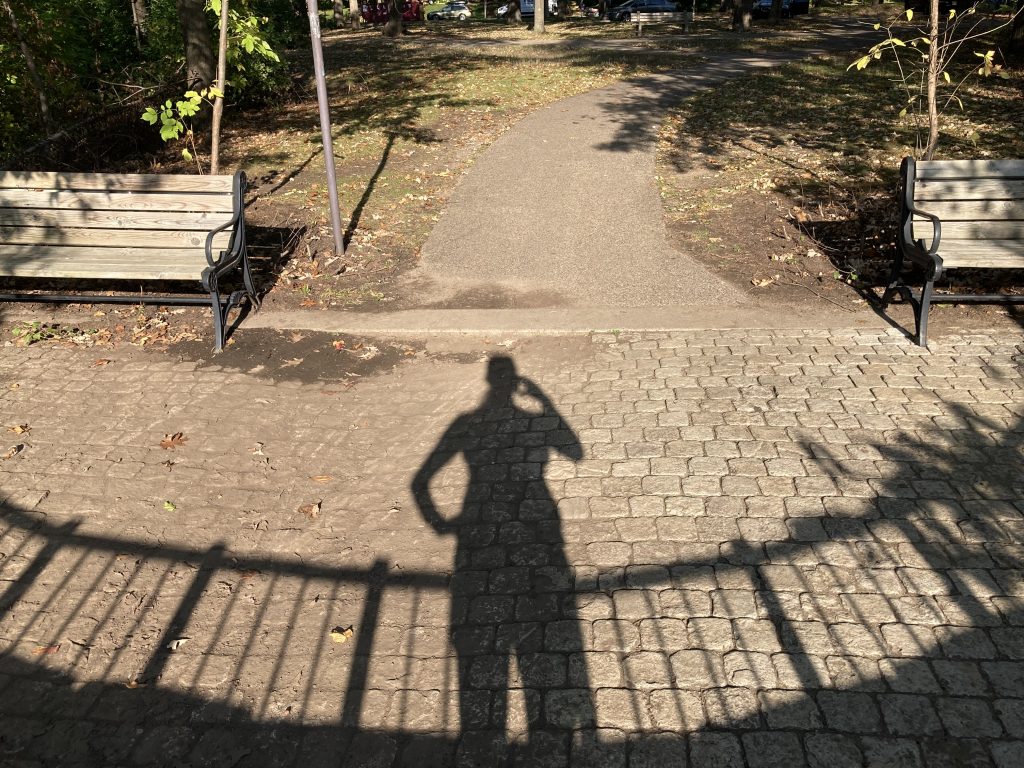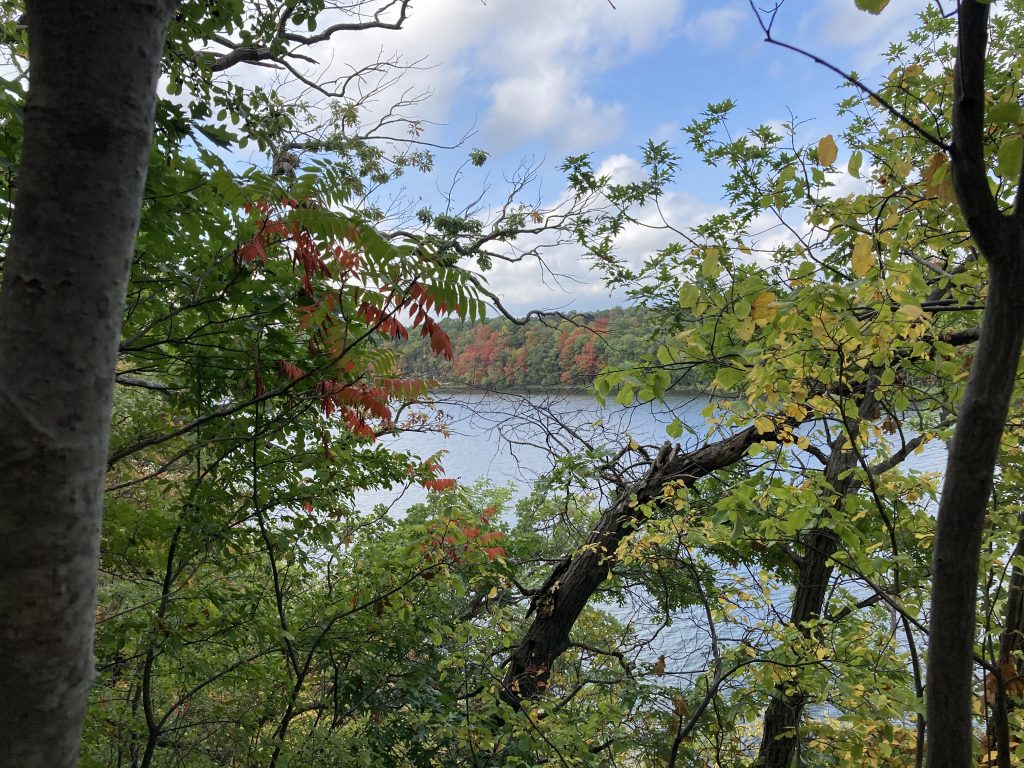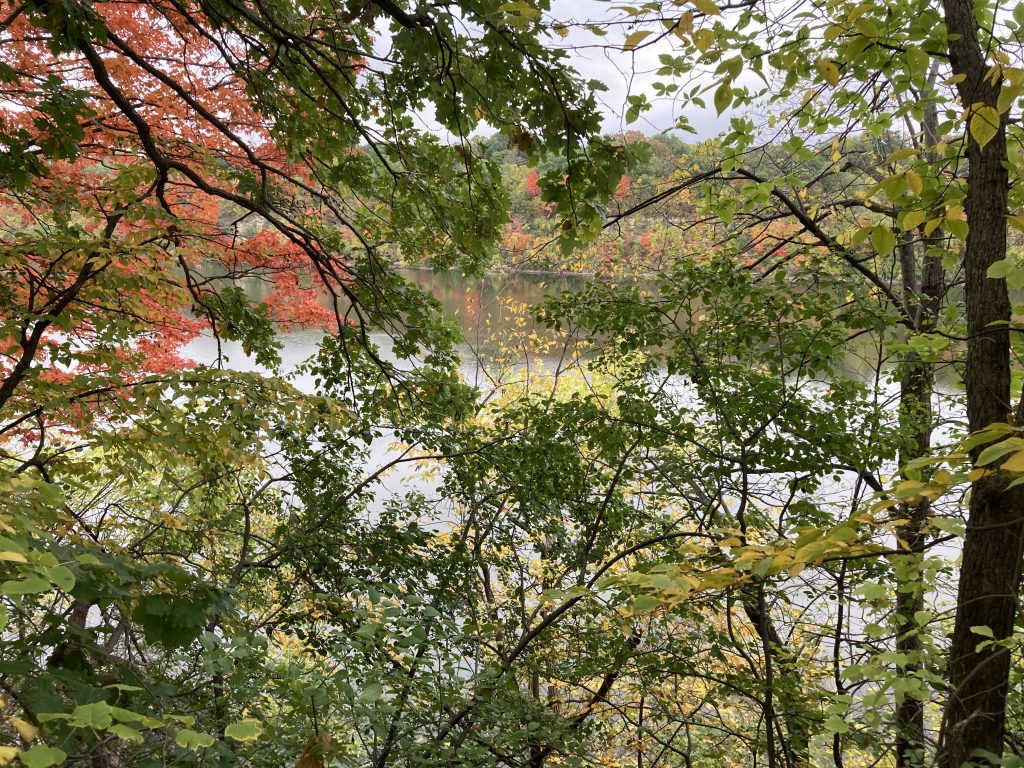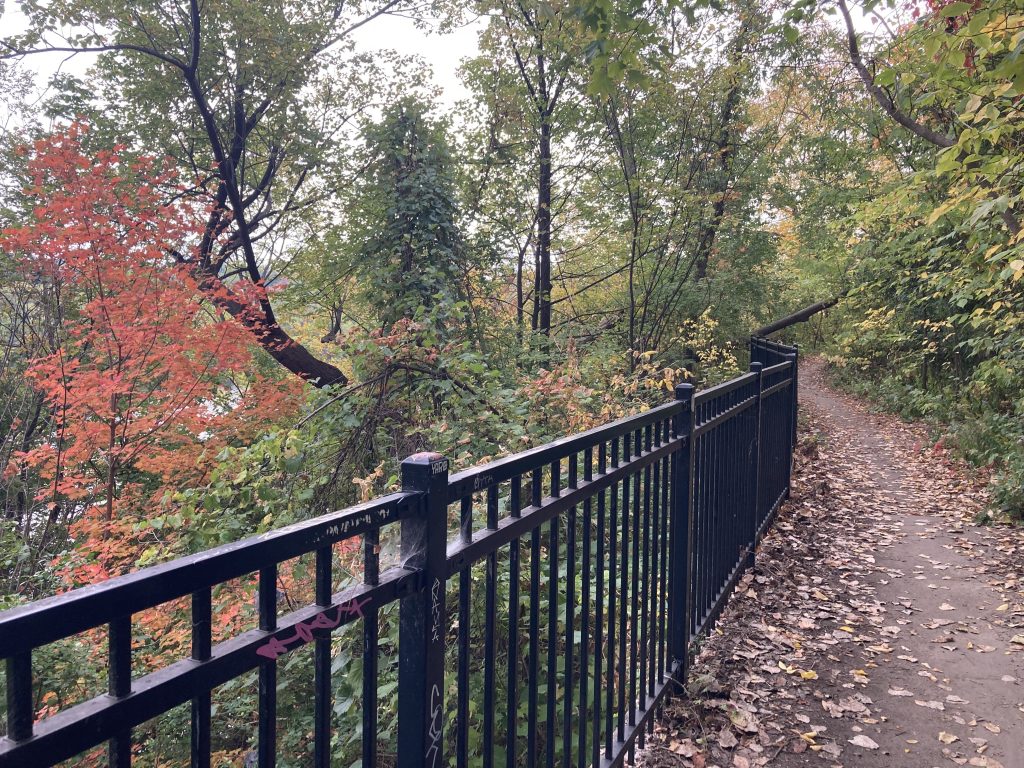4.4 miles
longfellow gardens and back
64 degrees / 78% humidity
A little cooler, but still humid. More shorts and tank top. Decided to run past the falls to Longfellow Garden to check out the flowers. Oranges, reds, pinks, purples, yellows. Did the gray sky make the colors seem even more vibrant to me?
The falls were gushing, so was the creek. The sound of dripping water from the sewer mixed with the wind. Chainsaws echoed below me in the gorge as Minneapolis Parks workers removed dead branches and leaning trees.
Running on the part of the trail that dips below the road, between locks and dam no. 1 and the 44th street parking lot, I could smell the rotting leaves — the too sweet, stale smell of last night’s beer. Yuck! Did I smell anything else? Yes! The strong scent of burnt toast or burnt coffee beans or burnt something somewhere in the neighborhood. The soft, pleasing scent of the tall, fuzzy grass that Scott says smells like cilantro.
I listened to kids being dropped off for school as I ran south. At my favorite spot at the falls, I put in an old playlist. I took my headphones out again when I reached the Winchell Trail. Then I put them back in after I was done and walking home. I listened to a chapter about the benefits of being small in Robin Wall Kimmerer’s Gathering Moss.
Since I’m prepping for a week about fall color for my class, I tried to notice color on my run.
10 Things I Noticed: Color
- there is still so much green. Everywhere, green. Not dark winter green, but light summer green
- a few slashes of red on the edge of the trail, the bright red hair of a walker
- orange cones, orange vests, orange signs, a past-its-prime orange tree, orange school bus, orange flowers sticking out above the other flowers
- hot pink petals, still intact
- flowers glowing such a light, almost white, purple that I imagined them to be ghost flowers
- yellow safety vests on a long line of bikers crossing at the roundabout, backing up traffic
- dry and dead brown leaves on the edge of the trail, covering the path
- the dark blueish gray of crumbling asphalt
- dark brown mud
- white foam from the raging falls
While walking around the garden, I took a few pictures:

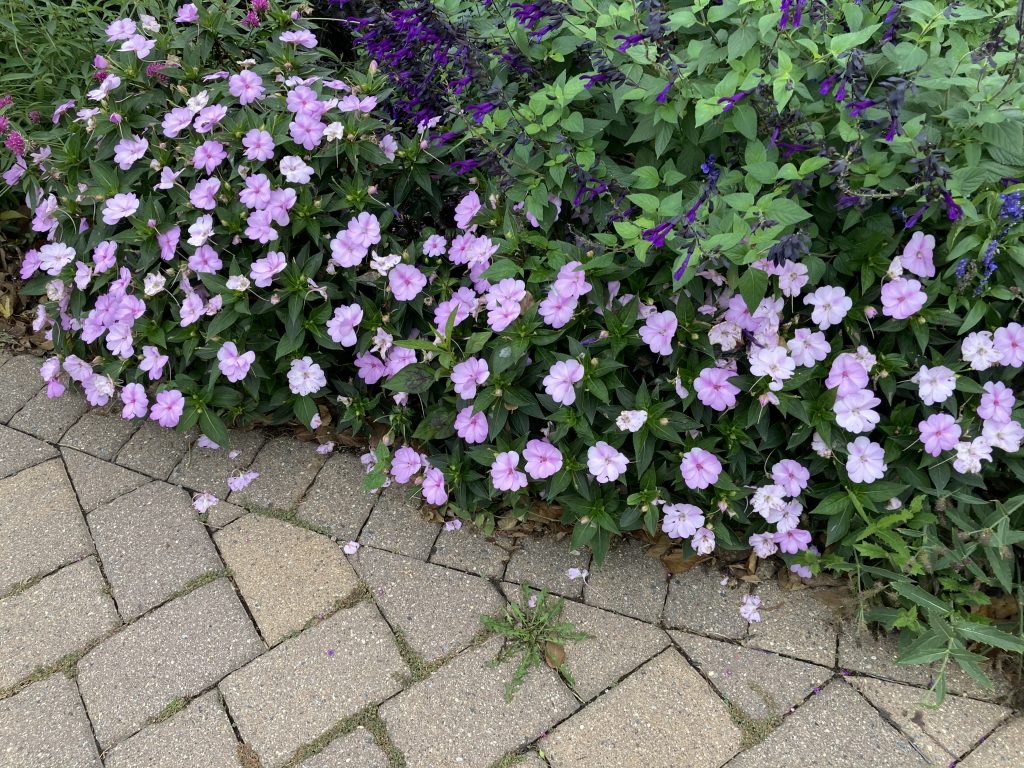
I love this description of what poetry is/could or should be:
Ars Poetica/ José Oliverez
Migration is derived from the word “migrate,” which is a verb defined by Merriam-Webster as “to move from one country, place, or locality to another.” Plot twist: migration never ends. My parents moved from Jalisco, México to Chicago in 1987. They were dislocated from México by capitalism, and they arrived in Chicago just in time to be dislocated by capitalism. Question: is migration possible if there is no “other” land to arrive in. My work: to imagine. My family started migrating in 1987 and they never stopped. I was born mid-migration. I’ve made my home in that motion. Let me try again: I tried to become American, but America is toxic. I tried to become Mexican, but México is toxic. My work: to do more than reproduce the toxic stories I inherited and learned. In other words: just because it is art doesn’t mean it is inherently nonviolent. My work: to write poems that make my people feel safe, seen, or otherwise loved. My work: to make my enemies feel afraid, angry, or otherwise ignored. My people: my people. My enemies: capitalism. Susan Sontag: “victims are interested in the representation of their own sufferings.” Remix: survivors are interested in the representation of their own survival. My work: survival. Question: Why poems? Answer:
the work of a poet: to imagine; to do more than reproduce toxic stories; to make your people feel safe, seen, loved; survival
